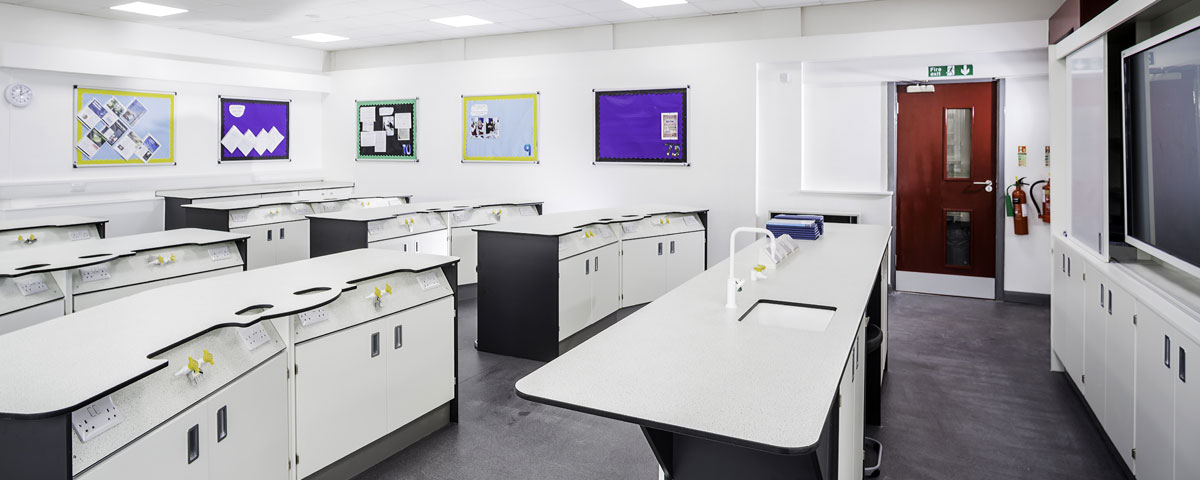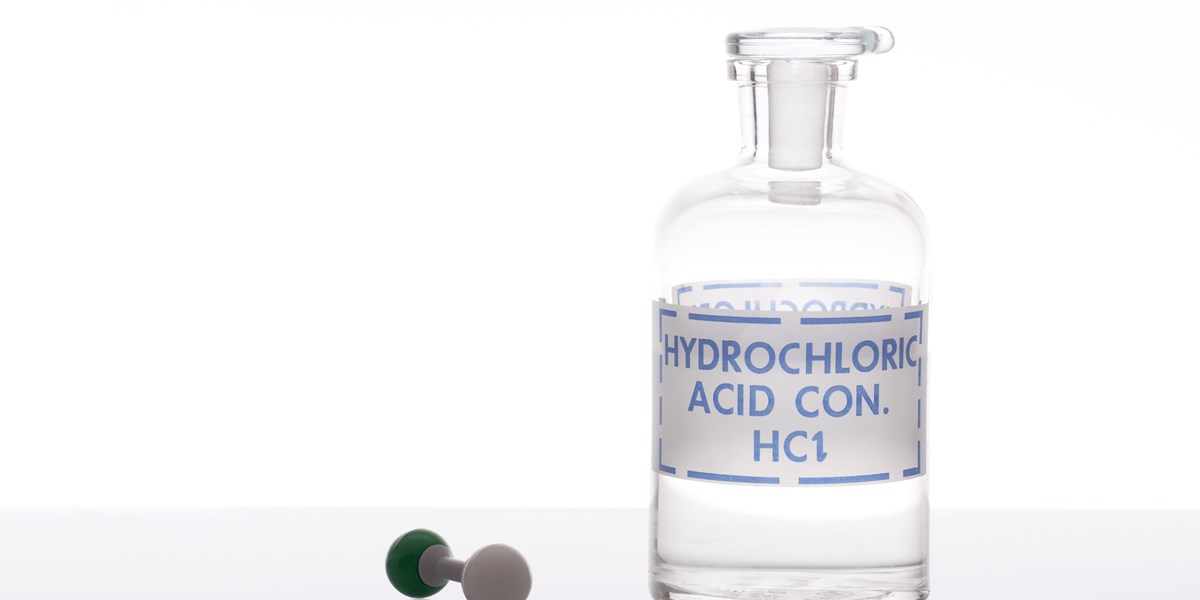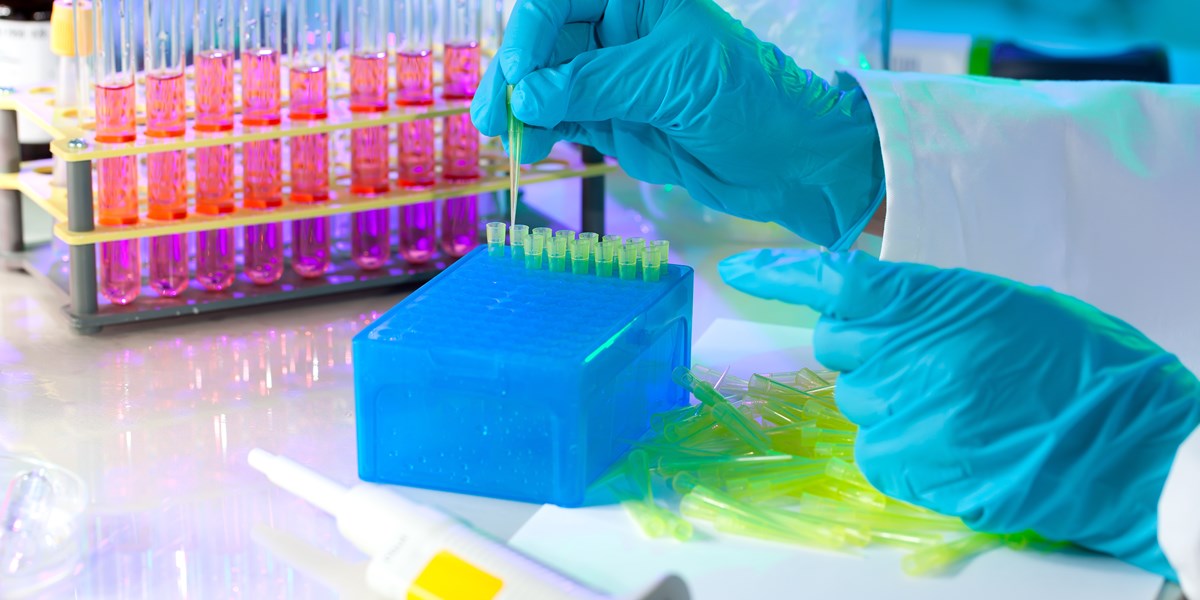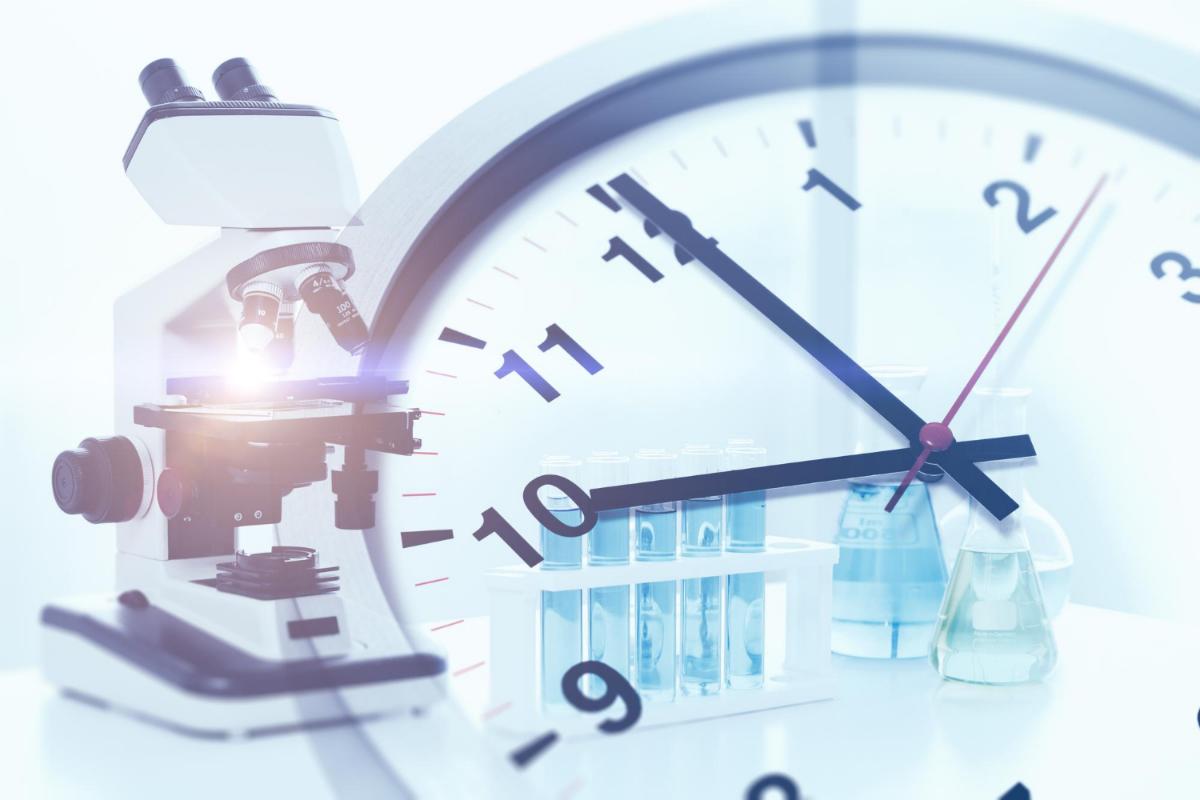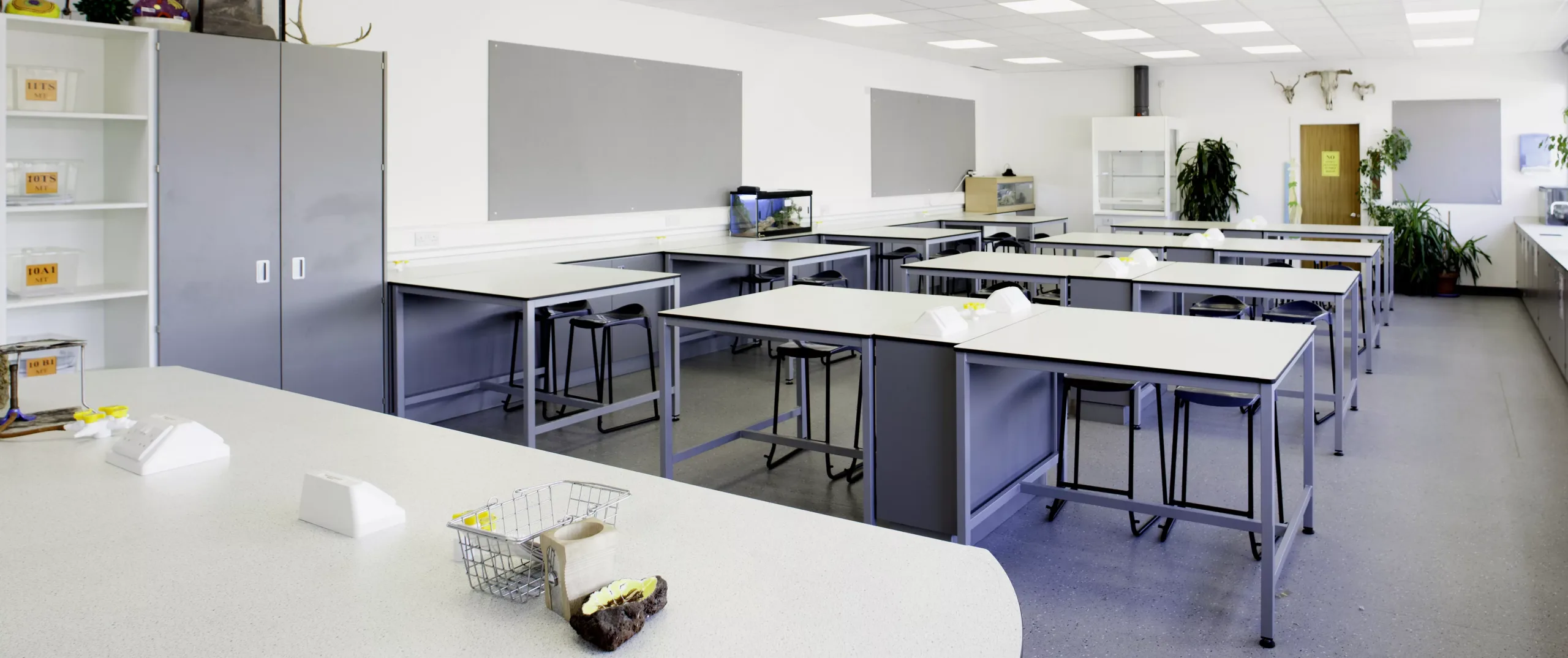
Given the specialist equipment and services required in school science labs, implementing a well-designed, fit-for-purpose laboratory presents a number of design problems. Here, we look at the pros and cons of three laboratory layouts to find out which features make for a successful school science lab.
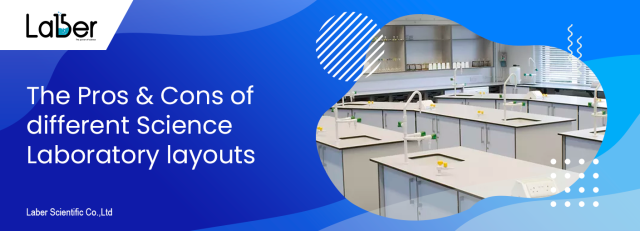
The fixed bench layout
Science labs differ from standard classrooms because they require specialist equipment and services to make them effective for practical working. Certain schools opt for long, fixed benches, with easy access to underfloor services such as gas, water, electricity and drainage for all students. Though traditional, the fixed bench layout is effective, with ample desk space for practical work, good access to under-bench equipment cupboards and an excellent line of sight between teacher and pupil.
One of the key drawbacks to the fixed desk layout however, is safety. As fixed benches usually extend across the width of the laboratory, teachers have poor access to students sat in the middle of each bank – particularly dangerous should an accident occur. For this reason, gangways should remain clear at all times, and equipment stowed safely after each practical exercise.
Another issue with the fixed bench layout is that services are often not available beneath each pupil, but rather only at certain points around the room. This layout isn’t ideal, given that students will be required to move to engage in practical work. They may also have to work with their back to the teacher, which can present significant safety risks.
Service pedestals with tables
To save space and make it easier to connect particular services, many schools install pedestals at different junctions around the laboratory. Conventionally, these units are bolted to the floor with space for two or more desks to adjoin them. The pedestals provide students with gas, electricity and drainage for practical work, without taking up valuable desk space for theory-based learning.
Many schools, academies and colleges favour the service pedestal layout because it offers much more flexibility than a fixed-bench setup. As it is only the pedestal that is in a fixed position, benches can easily be moved to cater for specific, day-to-day requirements. This not only improves access for both pupils and teachers, it promotes collaboration by making it easier to cluster benches together to accommodate practical group work.
The service pedestal setup does have significant drawbacks however. Firstly, the arrangement of desks can mean students must sit with their back or side facing the tutor, hampering line of sight and making it difficult to communicate effectively. Performing practical experiments whilst facing away from the teacher can also be very dangerous. Another negative aspect of the pedestal setup is that unsecured benches can be dangerous, noisy and rickety – particularly when placed on rough or uneven surfaces.
Custom-built layouts
Many modern school laboratories feature custom-built layouts that come in an assortment of shapes and sizes to accommodate small, medium and large school laboratories.
At Innova, we have devised a specialist laboratory layout that accommodates both practical and theory lessons: the Hot Corner. This state-of-the-art unit combines practical functionality with thoughtful design to offer a flexible system that will meet the requirements of a number of scientific disciplines.
Combining practical and theory spaces on one work bench, the Hot Corner layout reduces spatial restrictions on a room, offering teachers and students a more dynamic way of working than ‘old fashioned’ rows of desks.
By relocating the teacher to the ‘long wall’ of the classroom, Hot Corners shortens communication lines and enables greater collaboration. And with the furniture designed so students all face the front, no one has their back to the teacher.




